![]()
|
Cartwright
& Edwards
|
Location and period of operation:
|
Cartwright
& Edwards |
Longton |
1857/8
|
1990 |
Earthenware and china manufacturer at Longton and Heron Cross, Stoke-on-Trent, England
Around 1857 the pottery firm Cartwright & Edwards was started in Warren Street, Longton. The partners were Edward Cartwright, Aaron Edwards and Isaac Richardson.
In May 1859 Richardson left the business which was continued by Cartwright & Edwards.
In 1868-9 they built the extensive Borough Pottery in Trentham Road, Longton. It was built as a 'model factory' making use of machinery for many processes.
In December 1887 Cartwright left the business which was continued by Aaron Edwards. The name 'Cartwright & Edwards' was retained.
Aaron Edwards died in July 1908.
In 1912 the company also took the existing Victoria Works. These works produced china ware and was close to the Borough Pottery which produced earthenware.
In 1914 William Hall was appointed Managing Director. At this time the company employed 500 people.
Around 1916 the company aquired the Heron Cross Pottery in Fenton.
By 1923 Cartwright & Edwards had also acquired the earthenware manufacturer Holdcrofts Ltd. who operated from the Sutherland Works, directly opposite the Borough Pottery.
In June 1923, the Managing Director, William Hall died at age 55. At this time the company employed 1,000 people.
After William Hall's death Norman Edwards, a grandson of Aaron Edwards, became Managing Director - a position he still held in 1947.
In 1948 Holdcrofts was closed and the Borough Pottery was extended using the land occupied by Holdcrofts.
In 1955 Alfred Clough Ltd. took over Cartwright & Edwards Ltd., who continued to operate under their own name.
Both the Victoria Pottery and the Borough Pottery were sold to the Manor Engineering Company. The Victoria Pottery was demolished and the Victoria Foundry built on the site. The Borough Pottery became the Borough Engineering Works.
A new works was built on and adjacent to the land where the Borough Pottery extension was. This new and large works was called the Newborough & Sutherland Works. This was occupied by Cartwright & Edwards from 1960. The machinery installed could produce cups, mugs and plates four or six at a time, rather than just singly.
The 1960 Pottery Gazette Reference Book records: "Cartwright & Edwards Ltd. (a subsidiary of Alfred Clough Ltd.), Newborough & Sutherland Potteries."
The directors were: Chairman - Alfred J. Clough; Managing Directors - Alfred J. Clough, Astor R. Clough and Aubrey E. Clough. The Sales Manager was W. G. Parrish.In 1960 Alfred Clough had aquired W. H. Grindley and by 1978 Clough was renamed Grindley of Stoke (Ceramics) Ltd. and all the Clough companies operated under this parent company. Cartwright & Edwards were then trading as 'Cartwrights of England'.
In 1982 Cartwrights and other Clough subsidiaries became part of Federated Potteries Co Ltd. In Feb 1987 these businesses were sold and Cartwright & Edwards was brought by the Coloroll Ceramics Group.
Coloroll went into receivership in 1990, there was a management buyout and the buyout was renamed Staffordshire Tableware.
Cartwright & Edwards were not part of the buyout and in June 1990 receivers were appointed.
Manufacturing ceased from now on.
Cartwright & Edwards was dissolved in August 1998. There were various actions by creditors leading to restoration of the company to the register. Final dissolution occurred in September 2015.
Aaron Edwards was born in Longton in August 1832.
He was likely in business with a Thomas Beardmore as Beardmore & Edwards until April 1858.
He was co-founder in 1858 of the firm of Cartwright and Edwards, Warren Street, Longton.
Edwards served on the Longton Board of Guardians and was Mayor of Longton in 1874, 1896-9, and 1907-8. He was created alderman in 1875. He represented Longton on Staffordshire county council.
He was a member of the Methodist New Connexion, and was associated with Zion Chapel, Longton.
He served on the board of several local building societies. In politics he was a Liberal, supporting sanitary reform and borough extension. He played a leading role in securing the Sutherland Institute as the Central School for Science and Technology and School of Art.
Aaron Edwards died on 8 July 1908.
|
The London Gazette
27 May 1859
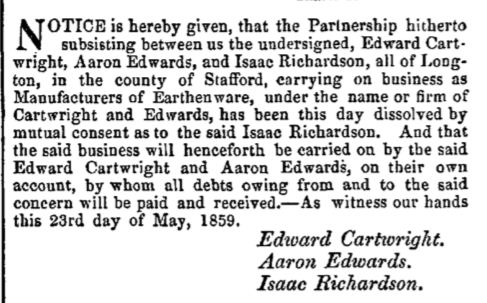
Notice that Isaac
Richardson left the business
The London Gazette
10 January 1888
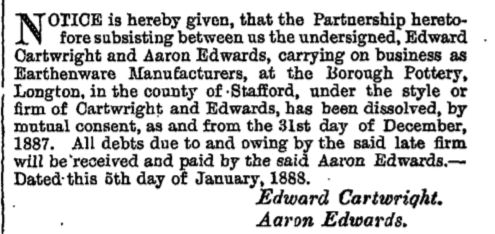
Notice that Edward Cartwright
left the business

Cartwright & Edwards,
earth'ware manufacurers
from..... 1907
Staffordshire Sentinel
'Business Reference Guide to The Potteries, Newcastle & District'
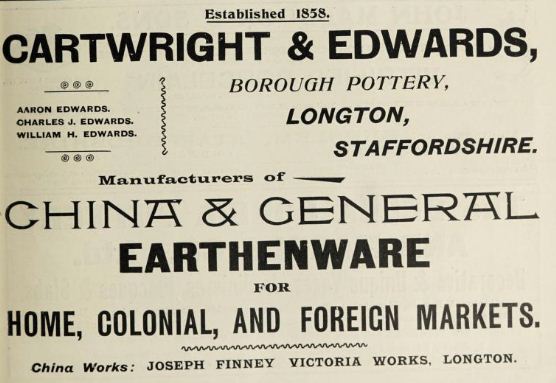
Established 1858
Cartwright & Edwards
Borough Pottery, Longton, Staffordshire
China &
General Earthenware
for
Home, Colonial, and Foreign Markets
Pottery Gazette - January 1906
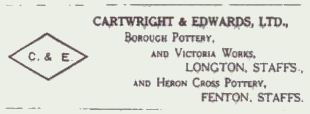
Borough Pottery and Victoria
Works, Longton, Staffs
Heron Cross Pottery, Fenton, Staffs
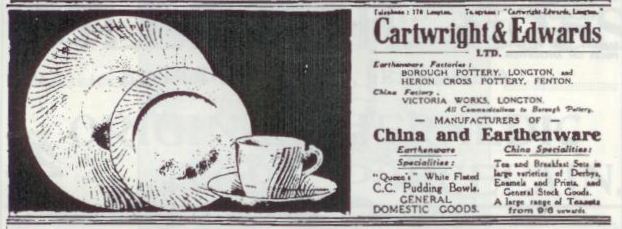
Cartwright & Edwards Ltd
manufacturers of
China and Earthenware
from: 1917 Pottery Gazette
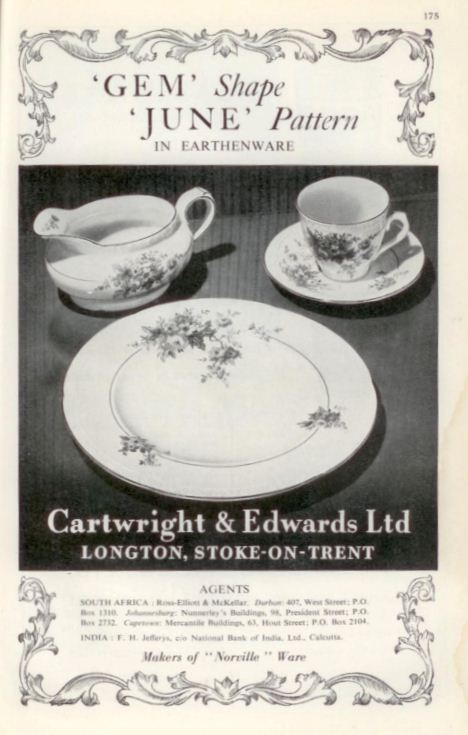
Cartwright & Edwards Ltd
Longton, Stoke-on-Trent
from: 1947 Pottery Gazette Reference Book
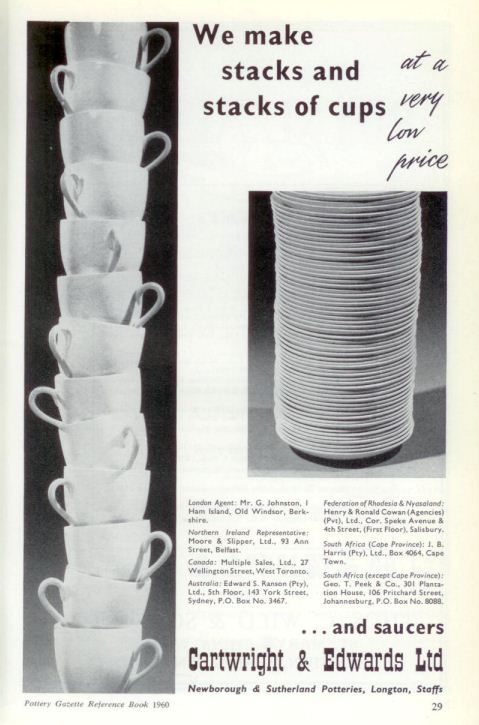
Cartwright & Edwards Ltd
Newborough & Sutherland Potteries
Longton, Staffs
from: 1960 Pottery Gazette Reference Book
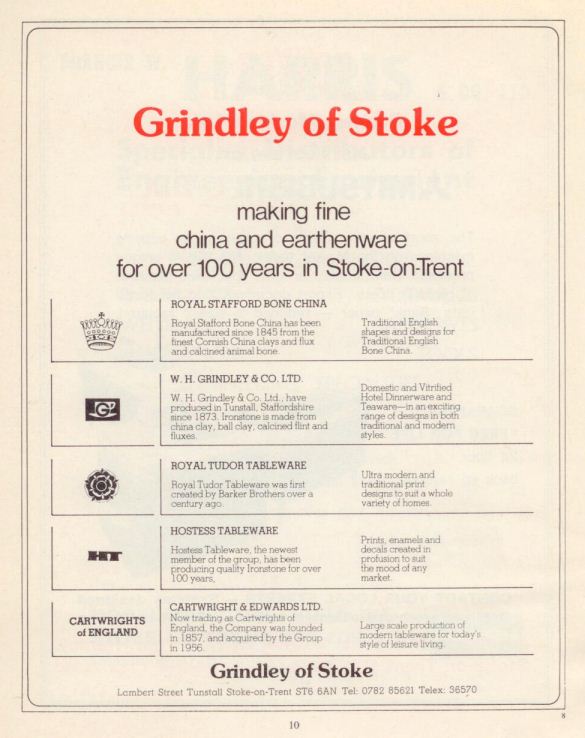
Cartwright & Edwards Ltd
Now trading as Cartwrights of Stoke
"Large scale production of modern
tableware for today's style of leisure living"
from: 1978 The City of Stoke-on-Trent Handbook
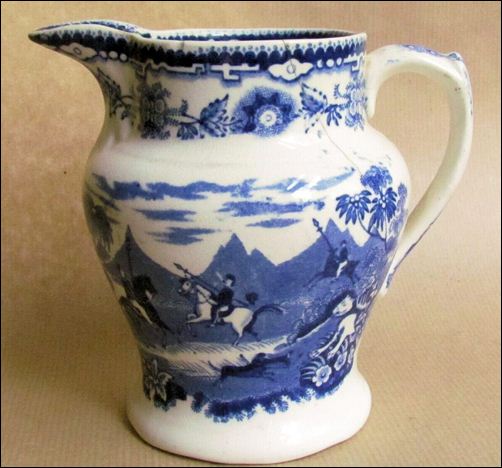
blue & white transfer ware
jug in the Tiger Hunt pattern
likely 1880-1900
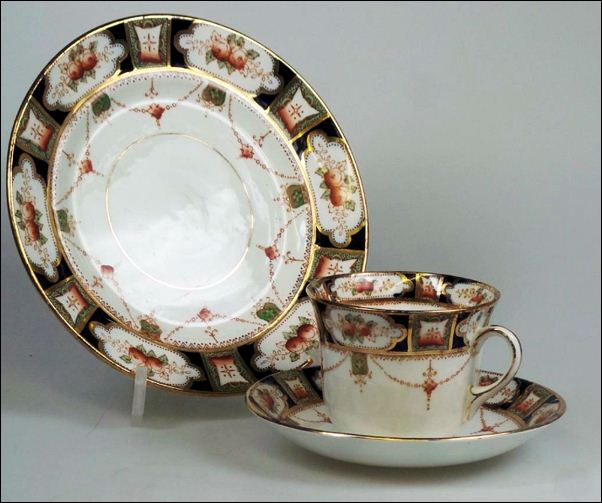
Trio in an Imari style pattern
BORONIAN WARE
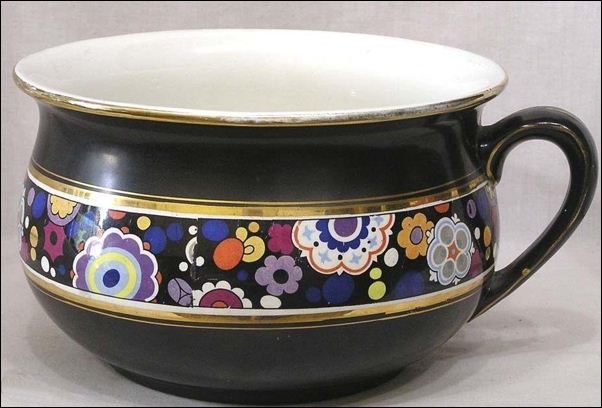
Chamber pot
BORONIAN WARE
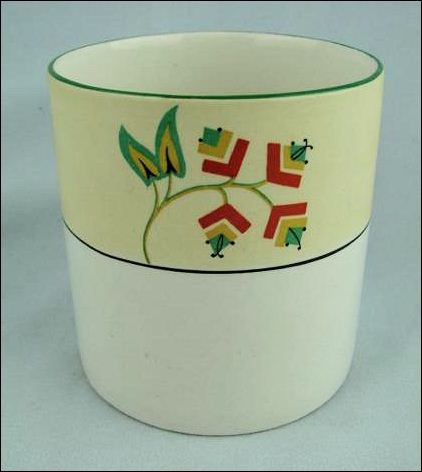
small pot
BORONIAN WARE
BORONIAN was a trade name that
Cartwright & Edwards used,
probably from around 1912 onwards - it the name was
used on all sorts of style and types of ware
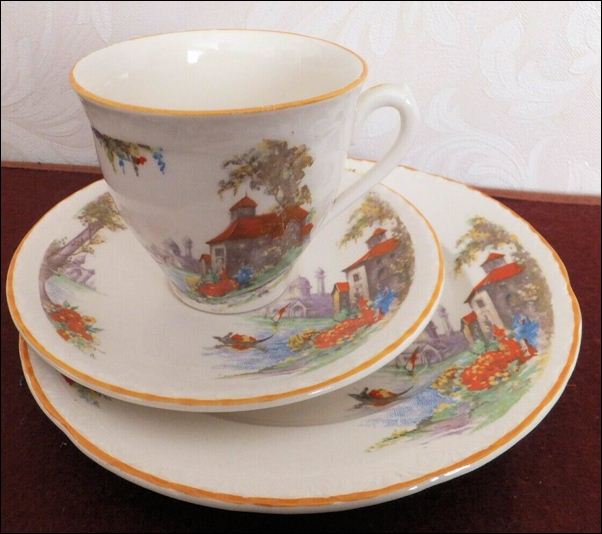
Trio in the VENICE pattern
NORVILLE WARE
VENICE was a popular pattern in Norville Ware
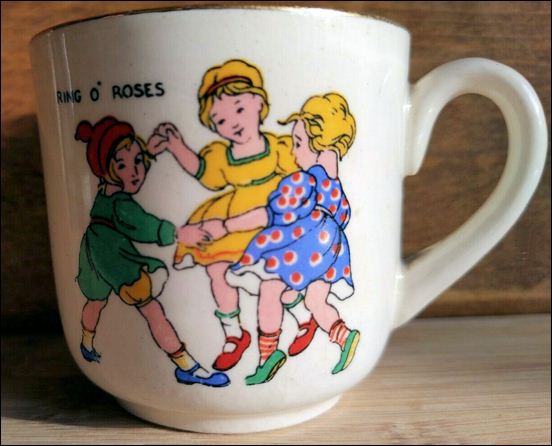
Childrens nursery rhyme cup
NORVILLE WARE
NORVILLE was a trade name that
Cartwright & Edwards used,
probably from around 1936 onwards - it the name was
used on all sorts of style and types of ware
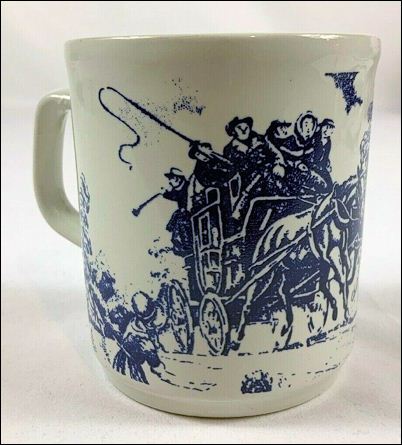
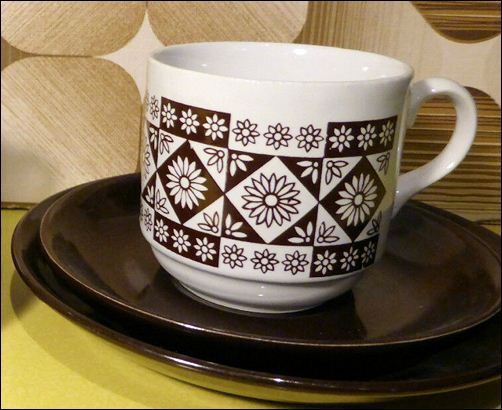
Cups in the 'Table Tops' range
TABLE TOPS was a trade name that Cartwrights used in the 1970/80's
Initials and marks used on ware for identification:
C & E
VICTORIA
[trade name, introduced
c.1912+]
used on china produced at the
Victoria Works
C &
E Ltd
"LTD" added to the mark
c.1926+
NOTE: not all marks after 1926 have LTD
BORONIAN
WARE
[trade name, introduced
c.1926+]
NORVILLE
WARE
[trade name, introduced
c.1936+]
Table
Tops
[trade name, used in
the 1970/80s]
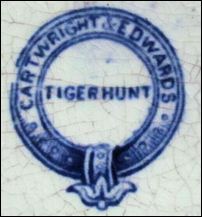
Cartwright & Edwards
Tiger Hunt is
the pattern name
likely 1880-1900
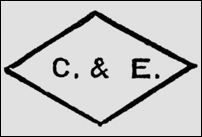
C & E
this mark appears printed and
impressed
it was used c.1900 onwards and
appears in trade directories until
at least 1960
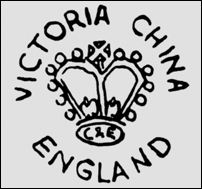 C & E Victoria China England |
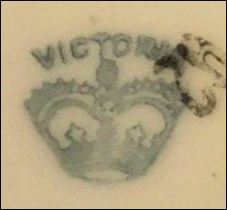 Victoria |
used on china produced at the Victoria Works
c.1912+
 C&E BORONIAN c.1912+ |
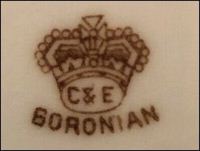 C&E BORONIAN c.1912+ |
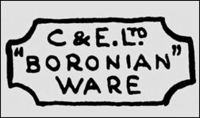 C&E LTD BORONIAN WARE c.1926+ |
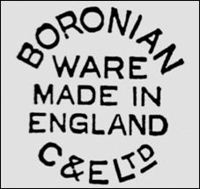 BORONIAN WARE Made in England C&E LTD c.1929+ |
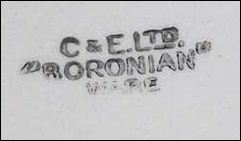 C&E LTD BORONIAN WARE likely 1940's+ |
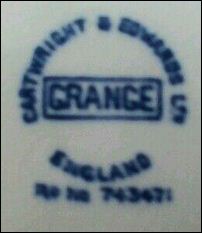
Cartwright & Edwards
Ltd
England
Grange is the pattern name
the registration number 743471
shows
that the pattern was registered in 1929
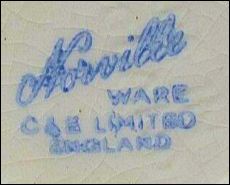
Norville
WARE
C&E LTD
England
c.1936+
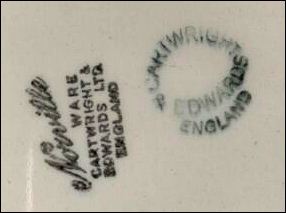
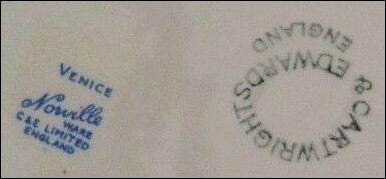
Norville Ware - Cartwright
& Edwards England
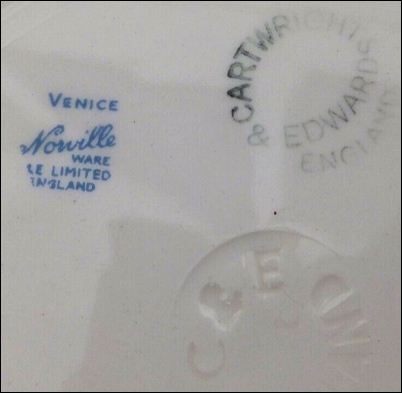
C& E
England
[impressed]

Victoria
C& E
Bone China
England
c.1936+
used on china produced at the
Victoria Works
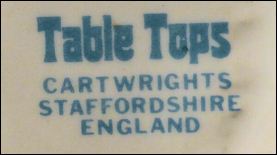
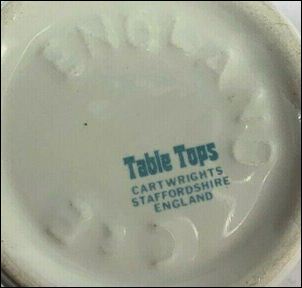
Cartwrights
Staffordshire
England
'TABLE TOPS' was a trade name used in the 1970/80's
'Cartwrights' was used 1978 onwards
Period of operation at the various works:
| Warren Street Pottery: | 1857/8 - 1869 |
| Borough Pottery: | 1869 - 1955/60 |
| Victoria Works: | 1912 - 1955 |
| Heron Cross Pottery: | 1916 - ? |
| Newborough & Sutherland Pottery: | 1960 - 1990 |
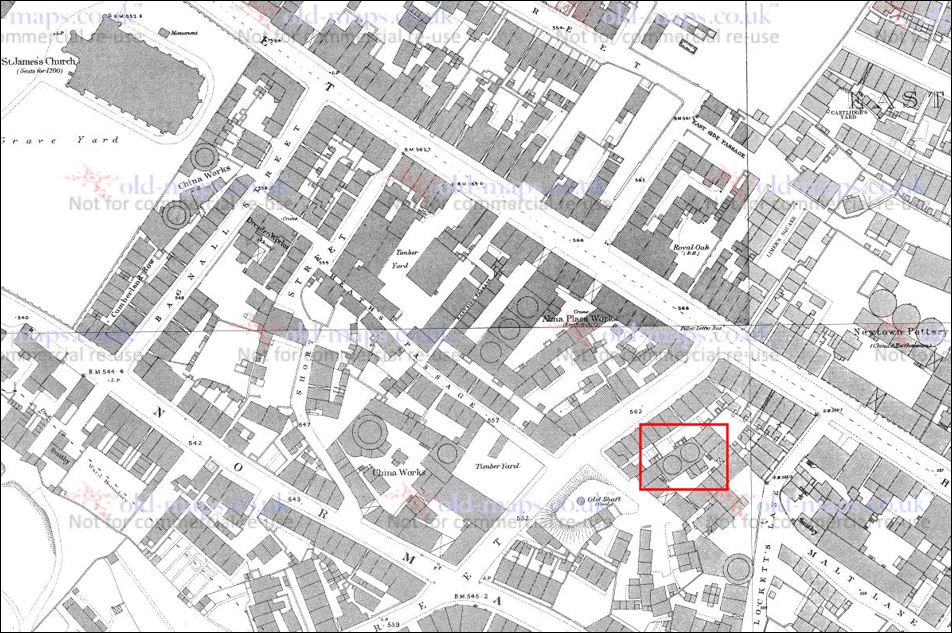
1878 map which shows the
location of the first Cartwright & Edwards works in Warren Street, Longton
St.James's
Church is at the top left
Cartwright & Edwards occupied these works from 1857/8 until 1869 when they built the Borough Pottery
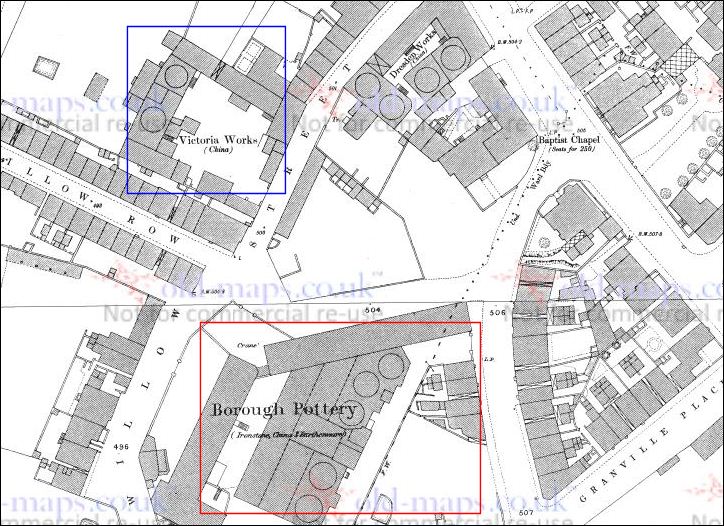
1878 map which shows the
location of the Victoria Works and the Borough Pottery, Longton
Cartwright & Edwards purpose
built the Borough Pottery in 1869 it produced earthenware
It was
built as a 'model factory' making use of machinery for many processes.
The Victoria
Works was built in 1828 by Ralph Shaw, it came into the possession of
Cartwright & Edwards in 1912, they produced china ware here.
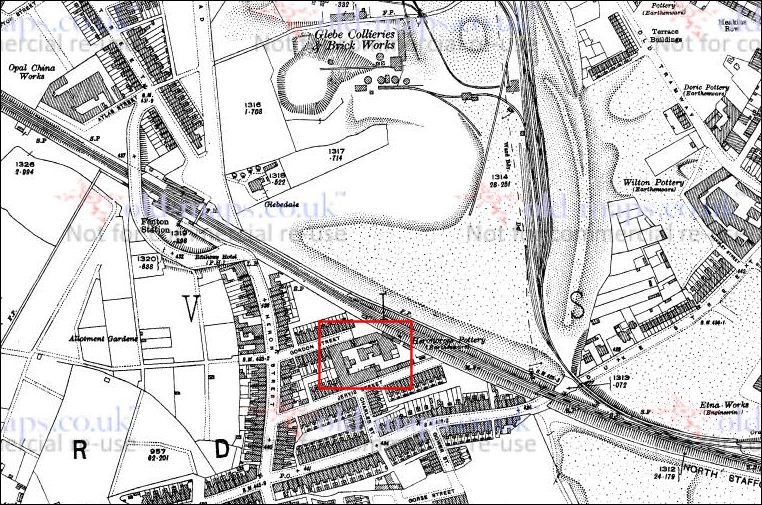
1924 map which shows the
location of the Heron Cross Pottery, Fenton
Around
1916 the company was also producing earthenware at the Heron
Cross Pottery in Fenton.
It is not known when they stopped using these works
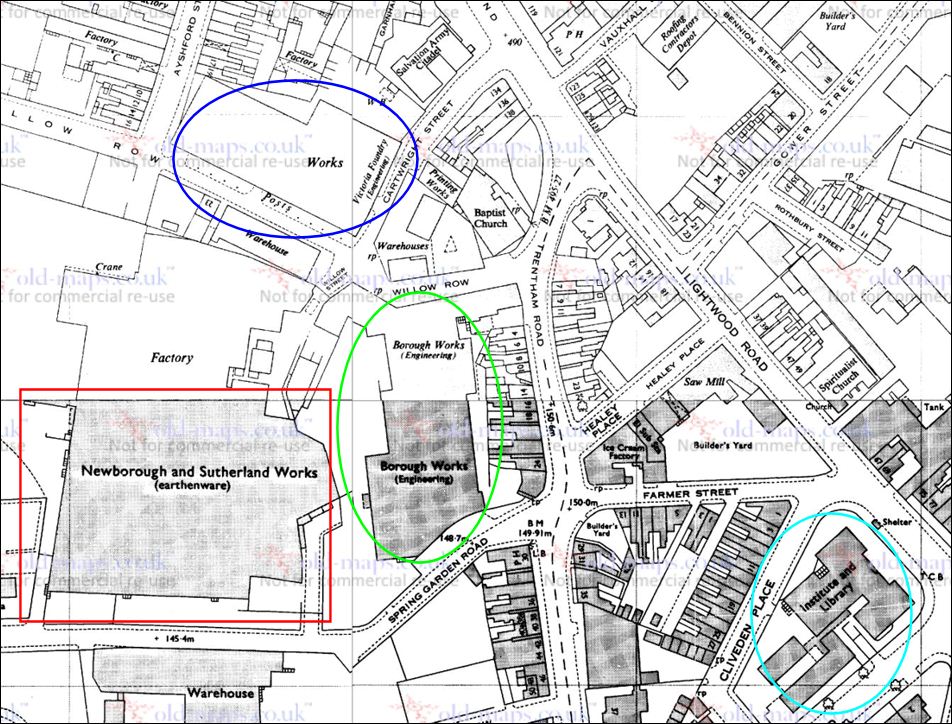
1962 map which shows the
location of the newly built Newborough & Sutherland Works
marked in blue is the Victoria Foundry,
previously the china works and marked in green is
the Borough Engineering Works, previously the earthenware works - these belonged
to Manor Engineering.
In
the bottom right, marked in light blue, is the Sutherland Institute and
Library,
completed in 1898, which Aaron Edwards
played a leading role in securing.
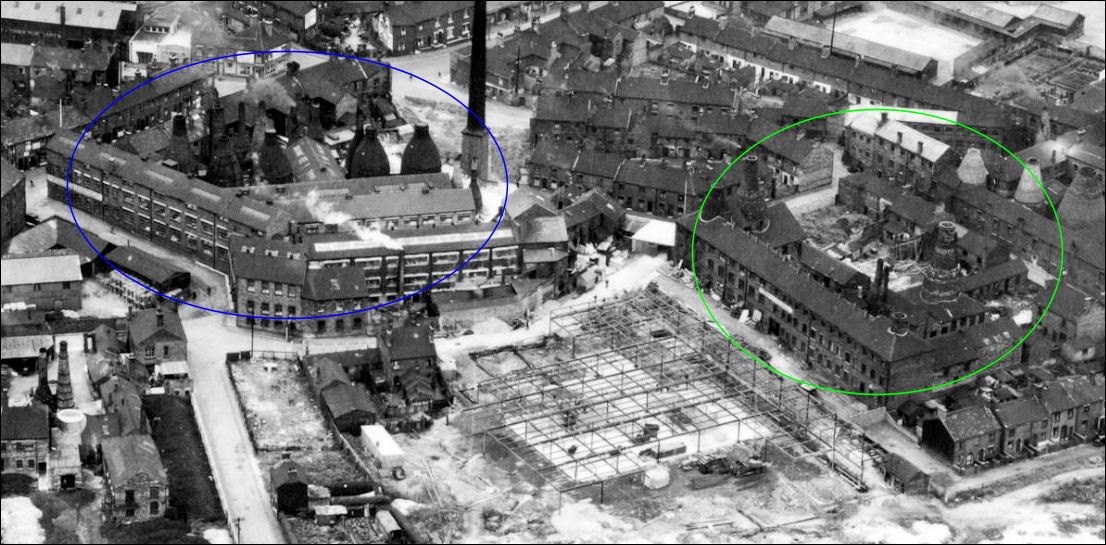
1948 photo showing the
extension to the Borough Pottery under construction
Borough Pottery in green and Victoria China Works in blue
Photo: Britain from Above
The Victoria Foundry (to the left of the picture) was built on the site of theCartwright & Edwards Victoria Pottery
to the right is the former Salvation Army Citadal
Questions, comments, contributions? email: Steve Birks